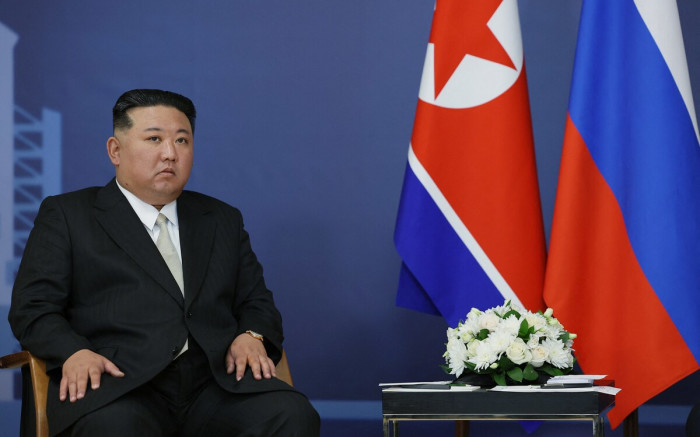
On Thursday, Israel’s Defense Minister Yoav Gallant shared his “Day according to plan” for the Gaza Strip after Israel concluded its military operation against Hamas, which has ruled the territory since 2007.
The draft is part of a “vision for phase three” document presented to Prime Minister Benjamin Netanyahu’s war cabinet on Monday. It said civilian administration of the enclave would pass to unnamed “Palestinian actors,” while Israel would retain the ability to conduct military activities inside the Gaza Strip after the war.
Here’s what you need to know about this plan.
What is the “Day After” plan?
Under this latest plan, neither Hamas nor Israel would rule the Gaza Strip once hostilities We conclude from this, but this comes with certain caveats, Gallant revealed.
The plan states that Israel’s war in the area will continue until the return of hostages captured by Hamas in southern Israel on October 7 is secured, Hamas’s “military and governance capabilities” are dismantled, and all remaining military threats are eliminated. reports Agence France-Presse (AFP) reported.
Once all this is achieved, a new phase will begin in which “Hamas will not control Gaza and will not pose a security threat to the citizens of Israel,” with other Palestinian entities taking over administration of the territory.
Israel would reserve the right to operate within the territory, meaning its forces could come and go at will – similar to current arrangements in the occupied West Bank. However, once the war goals were achieved, Israel would not maintain a permanent civilian presence in the enclave, nor would there be any Israeli settlements.
Gallant also said Israel would continue its intensive surveillance of the Gaza border. This could include maintaining a blockade of Gaza by land, air and sea, as well as conducting inspections of everything entering and leaving Gaza after the war, Al Jazeera correspondent Hamdah Salhut reported.
Gallant did not specify which Palestinian officials would govern the Strip, saying only: “The residents of the Gaza Strip are Palestinians, so Palestinian entities will be in charge, on the condition that there are no hostile actions or threats against the State of Israel.” becomes.”
“The entity controlling the territory will build on the capabilities of the existing administrative mechanism (Civil Committee) in Gaza,” Gallant’s plan states.
He also touched on plans for rebuilding and rebuilding Gaza after the war, saying that a coalition of international actors, including Arab and European states as well as other Western allies, would take responsibility.
How does the plan compare to what Netanyahu has said?
Netanyahu did it too said that a “civilian government” should govern Gaza after the war ends, but rejects the idea that the Palestinian Authority, the Fatah-led government that partially controls the West Bank, would be put in charge of the Gaza Strip.
He also said that the Israeli military must first “eliminate Hamas” before any post-war plans could be put into effect.
In November, Netanyahu declared that Israel would assume responsibility for Gaza’s security for an “indefinite period of time,” although he did not specify how this would happen. He added that this was necessary to prevent the “eruption” of further “Hamas terror.”
What have other senior Israelis said?
On Monday, far-right National Security Minister Itamar Ben-Gvir called for the return of Israeli settlers to the area after the war and a “solution to encourage emigration” of Gaza’s Palestinian population, echoing similar comments from right-wing Finance Minister Bezalel Smotrich.
In an interview with Israeli Army Radio on Sunday, Smotrich said that removing about 90 percent of Gaza’s population from the enclave would improve security in the region after the war, as Gaza is a “hotbed where two million people live.” growing up with hatred and striving to “destroy the state of Israel”.
“If there are 100,000 or 200,000 Arabs in Gaza and not two million, the whole discourse the day after will be different,” he added.

What does the PA say?
In an interview with the Financial Times, Palestinian Authority Prime Minister Mohammad Shtayyeh said that any possible agreement must include “a political solution for all of Palestine” and not just Gaza.
“[Israel] wants to politically separate Gaza from the West Bank,” Shtayyeh said.
“I don’t think Israel will leave Gaza very soon. I think Israel will establish its own civil administration, subordinate to the Israeli occupation army. And that’s why the question of the ‘day after’ is not yet clear.”
What does the US think?
Washington is pushing for a two-state solution and has done so recommended that Gaza will be governed by a “revived” Palestinian Authority based in the occupied West Bank.
Gallant’s plan is “completely at odds with what the Americans imagine as their so-called ‘Day After’ concept,” said Al Jazeera correspondent Mike Hanna.
“The Americans based their ideas on the fact that the PA would take control or administration of Gaza,” he added.
On Thursday, US Secretary of State Antony Blinken departed for a visit to Israel, where discussions about Gaza’s post-war future are expected to be on the agenda.






Recent Comments